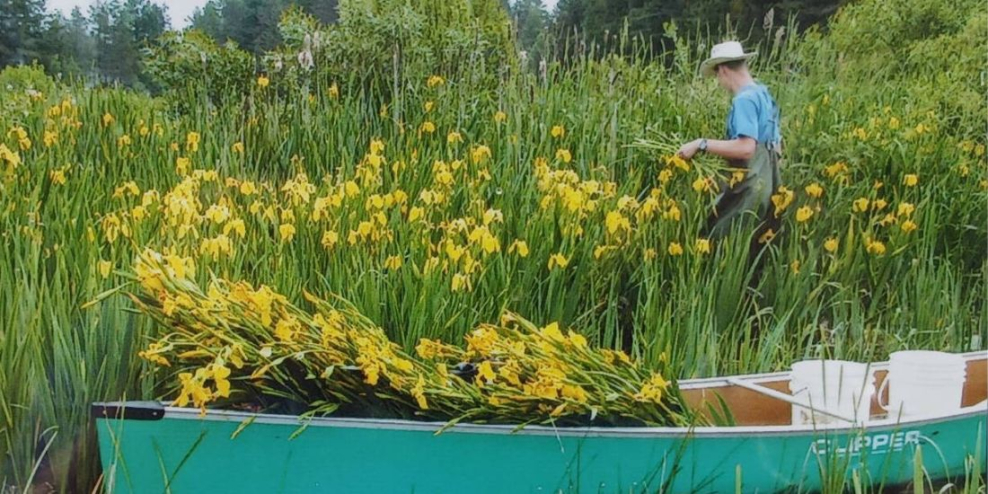Your momma may have told you all that glitters isn’t gold. Yellow Flag Iris proves her right. It may look beautiful to the average onlooker, but it’s completely decimating a local ecosystem.
Lazo Marsh is a hidden gem in the Valley. Locals Bob and Jane Austin built their home alongside it 25 years ago. Back then, they felt it was a little slice of paradise.
“Migratory duck counts numbered more than 2,500, and in the winter, Comox residents skated on the marsh. Not today,” Austin wrote in a special to the Comox Valley Record.
Now, the couple is shocked at how its former pools have become completely covered by species like the Yellow Flag Iris.
“We have seen the marsh deteriorate as it has been overrun by invasive plant life, which has almost eliminated waterfowl and other species.”
Yellow Flag Iris has outcompeted native plants, leaving all 49 hectares of the marsh almost uninhabitable for anything else.
This summer, Austin made it his mission to find out what could be done about it.
He reached out to Tom Biebighauser, a renowned wetland specialist from Kentucky.
Biebighauser has restored over 2,850 wetlands in Canada, the US, Mexico, and four other countries. He has been involved in restoring some 500 wetland areas across BC and Alberta, and he and a group of students were studying Lazo Marsh.
One of his primary recommendations for Lazo Marsh is “restoring natural wetland basins that range up to 10,000 square meters in size and from 1-2 metres deep with gradual slopes.”
The idea is that the basins would be too deep for yellow flag iris and reed canary grass to take root and thrive in.
Large open water areas would also be ideal habitats for other waterfowl and aquatic life.
Ducks Unlimited is the leading organization that has attempted some restoration activities in the marsh.
Biebighauser sent his recommendations to Matthew Wilson, head of Ducks Unlimited conservation programs, who said that they are “currently undertaking a comprehensive hydrologic study of the marsh.”
This report is set to help inform future management decisions.
Thomas Reid at Nature Trust expressed similar sentiments. In the past, his organization has used “scarification,” bringing in a bulldozer to scrape the heaviest layers of plant life away to create more open water.
Nature Trust also plans to use the hydrologic study results to decide what restoration efforts to take forward.
Austin hopes his efforts have moved up the timelines, although it will likely still be a lengthy process for genuine restoration efforts to begin. However, he has been encouraged by the group’s interest in renewing his beloved area.
“All the organizations involved in Lazo Marsh seem to be on the same page…restoring Lazo Marsh to become, once again, the valuable treasure that it once was.”
Other Comox locals have responded to Austin’s efforts to bring awareness with gratitude; some even had suggestions to help get more backing for the project.
“You could form a group consisting of neighbours and regular visitors, assess the immediate needs and present it to Council. Showing the community support. There are numerous areas that could use financial help to restore them,” said one community member on Facebook.
Whatever happens, the Austins have taken the first steps towards hastening change.











